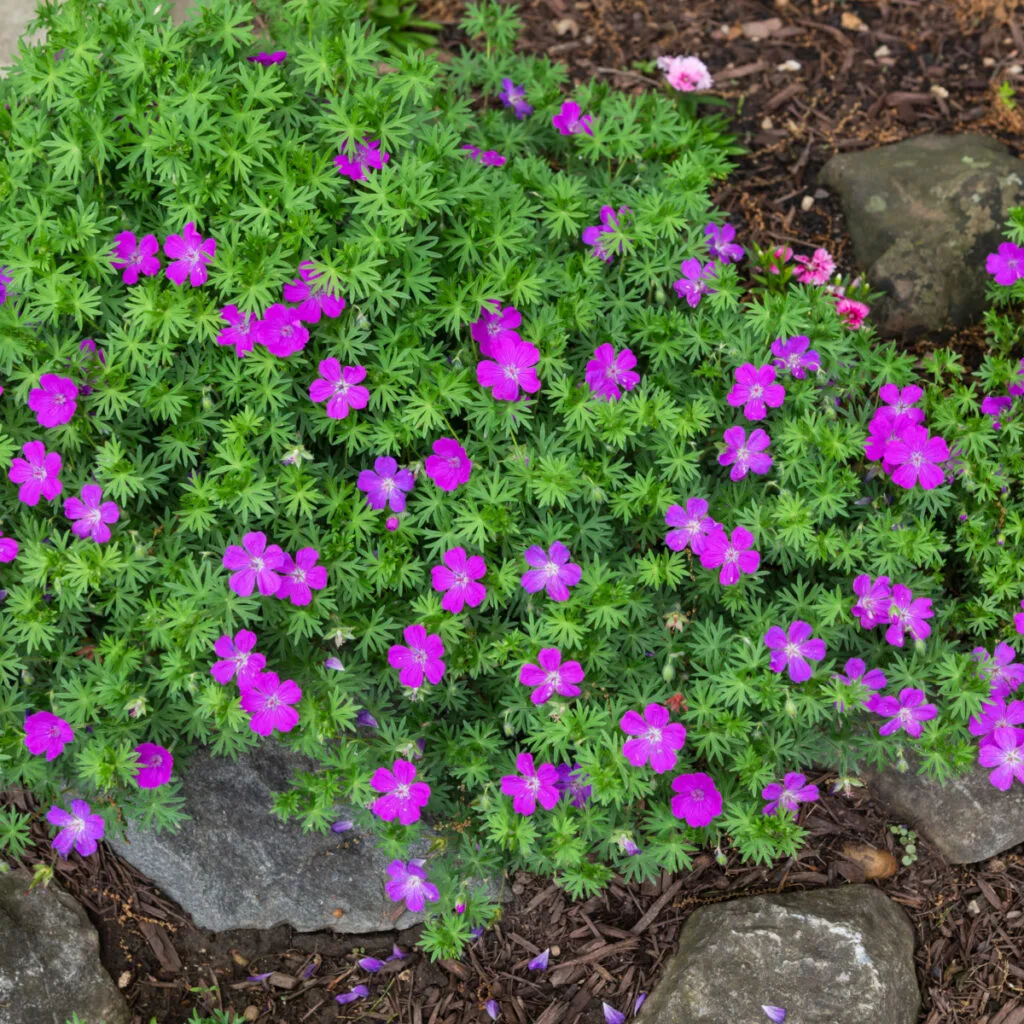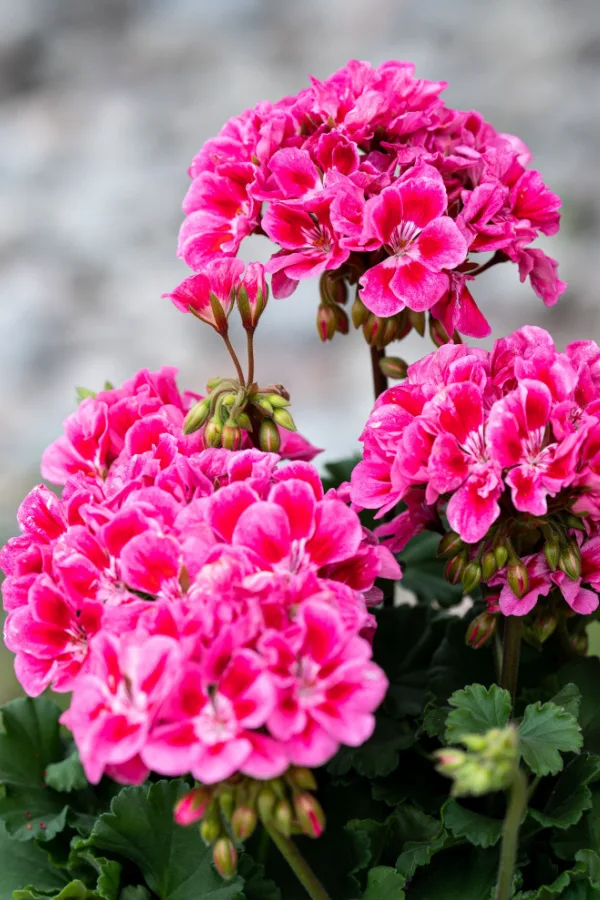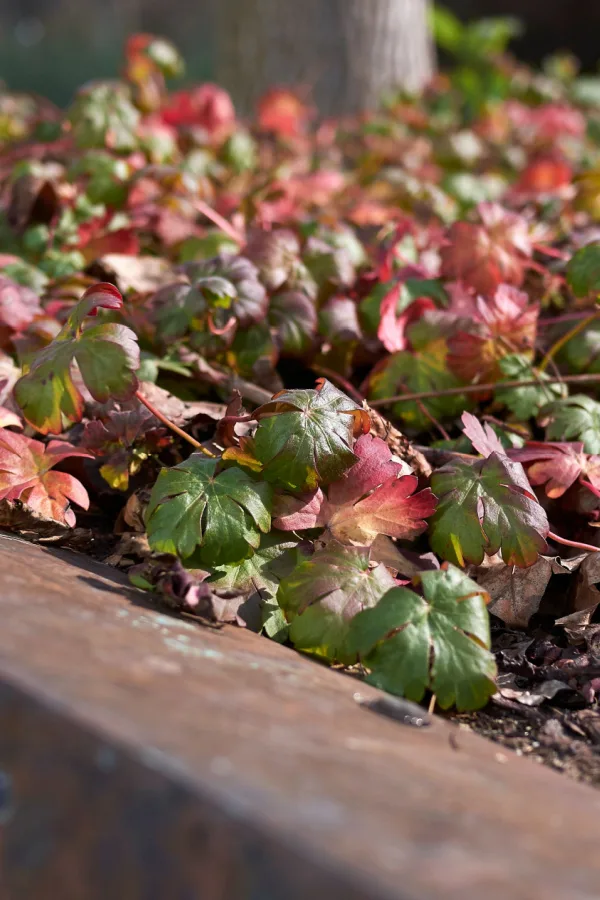If you are looking for an easy care flowering perennial with long lasting blooms – growing hardy geraniums might just be the perfect answer!
Unlike the annual variety that goes by the same name, hardy geraniums are not only able to withstand early fall frosts and freezes, they can also survive some of the coldest winters around with ease. Even better, they are both drought and deer resistant so you can plant without worry.
Hardy geraniums (also known as cranesbill) are actually a totally different species from annual geraniums altogether. Although they share the identical name, they have completely different features and characteristics, the most notable of which is that hardy geraniums can survive winters from zones three through nine.

The low growing perennial is a perfect choice for flowerbeds and garden borders. With varieties that grow from six to eighteen inches tall in a wide range of colors and shapes, they can compliment all types of plantings.
The Beauty Of Hardy Geraniums – Growing Hardy Geraniums
While most hardy geraniums prefer full sun, there are varieties that can tolerate partial shade. Essentially, no matter your growing conditions or property layout, there’s a hardy geranium variety that can work for you!
Hardy geraniums feature a very unique jagged-edged type of foliage Most are low-growing and are great for filling in the spaces between other taller perennial plants. Unlike annual geraniums that feature long stems with a dome of flowers at the top, hardy geraniums put out multiple, single-flowered stems.
The flowers have five petals, sometimes with contrasting veins running from the center. You can find varieties in shades of purple, blue, pink, and white. The small one-inch blooms are almost cup-shaped and are perfect for attracting pollinators like hummingbirds and bees.

But perhaps the best trait of all when it comes to hardy geraniums are their ability to bloom and rebloom. Unlike most perennials that flower for one specific two to three period during the season, these productive perennials can bloom off and on continually from spring until fall.
How To Plant, Grow, And Maintain Hardy Geraniums
Planting Hardy Geraniums – Growing Hardy Geraniums
You can plant hardy geraniums via divisions or starts purchased from garden centers. You can also find bare rhizomes online that can be planted directly in the ground.
While you can choose to plant hardy geraniums via seeds, it will take several years for them to get to a size that will flower. If you use divisions, rhizomes or starts, the plants will flower within their first year after planting.
Over time, they will slowly grow in and expand via rhizomes to fill in spaces, creating an almost carpet-like appearance.
Planting Transplants
The planting requirements will vary slightly depending on the variety of hardy geraniums you are growing. For example, Purple Cransebills require full sun to partial shade in order to produce their multiple blooms. Others might require more shade. (Product Link: Purple Cranesbill Roots)

Hardy geranium rhizomes should be planted in the early spring to give them a chance to establish and flower later that same year. Choose a location that receives the correct sun requirements based on the flower variety. For most, that will be full to partial sun.
About any soil type will work, but hardy geraniums do not like to sit in constantly wet soil. Since they are drought tolerant, soil that drains well is best. Amend soil with compost if needed to improve drainage and increase nutrients as well.
Place the geraniums in the ground so that the crown is just at the soil level. If you plant them too deeply, they will struggle to produce flowers. Keep newly planted geraniums evenly moist until they become established.
Long-Term Care – How To Grow and Maintain Hardy Geraniums
Watering
Since hardy geraniums are drought tolerant, you don’t have to worry much about watering after they establish in the soil. If plants are grown in direct sunlight, water in cases of high temperatures, or when you go a few weeks with little to no rainfall.
If hardy geraniums stay constantly wet, they can be prone to getting fungal diseases. It’s always better to underwater these perennials as opposed to overwatering them.

Fertilizing
You don’t need to add additional fertilizers unless you have soil that is extremely depleted in nutrients. Adding in compost at the time of planting should be enough to get plants through the growing season. You can also use compost as a mulch during the winter.
Pruning & Dividing
Cutting back the initial spring blooms will help to encourage additional blooms throughout summer and late into fall. Simply cut back plants to a few inches above the soil line. While it might seem extreme, the plants will grow back and fill in for additional blooming.
Dig up any plants that are outgrowing your desired space. This will help to keep them from spreading further and becoming too unmanageable. These can be great for filling in other locations with more plants – all for free!
Other than that, you should divide hardy geraniums every three to five years. You can divide and transplant hardy geraniums at any time of the growing season but it is best to wait until early spring through early summer. This will give the transplants time to become established before the cold temperatures of winter arrive.

Fall & Winter Care
When fall arrives, cut back the dying foliage to a couple of inches above the soil line. Remove the trimmed foliage and the add a layer of compost. This trimming will help the plants to prepare for the following spring’s blooming.
Adding a few inches of aged compost on top of plants will help protect them from freezing temperatures during winter. This will also give plants a good nutrient boost for the following growing season.
Pests & Issues
Hardy geraniums are mostly pest and disease free. Their main issues are mildew and fungal diseases if plants are kept in wet soils or if they are constantly watered overhead. They can also get rust on their foliage if they are grow in humid, shady locations.
Here is to growing hardy geraniums and enjoying their beautiful blooms all summer long!
Follow Our Facebook Page For Even More Great Tips! Simple Garden Life Facebook Page
Simple Garden Life is a website dedicated to keeping gardening fun, simple and enjoyable! We publish two new articles each week along with a new garden podcast episode every two weeks. This article may contain affiliate links.
